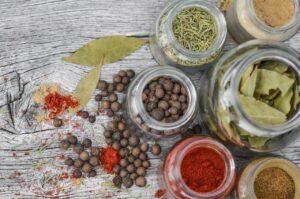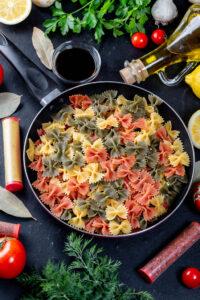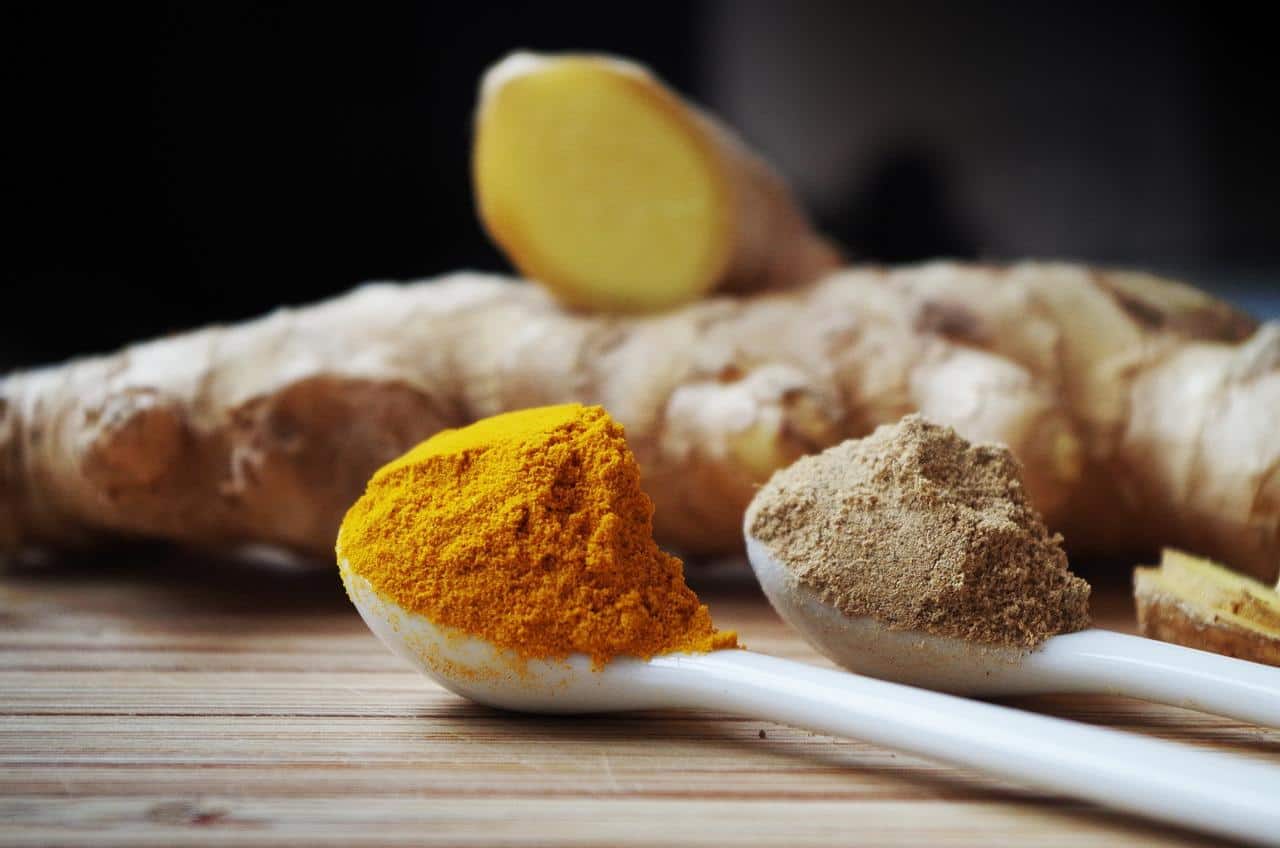Cooking with herbs and spices is an essential skill for any home cook. Adding flavor and aroma to dishes, herbs and spices can transform a simple meal into a culinary masterpiece. However, with so many herbs and spices available, it can be overwhelming to know where to start. This guide will provide an overview of the most commonly used herbs and spices, their flavor profiles, and steps for cooking with herbs and spices.
Cooking with Herbs and Spices
Herbs
Herbs are the leaves of plants that are used for flavoring, either fresh or dried. They are usually added to dishes towards the end of cooking or used raw as a garnish. Here are some common herbs and their flavor profiles:

Basil: Sweet and slightly peppery, basil is an essential ingredient in Italian cuisine, particularly in tomato-based dishes like pizza and pasta sauces. It also pairs well with cheese, eggs, and fish.
Parsley: Bright and fresh, parsley is often used as a garnish, but it can also add flavor to salads, soups, and stews. It has a slightly bitter taste that can help balance out rich dishes.
Rosemary: Woody and aromatic, rosemary is often used in Mediterranean cooking, particularly with lamb and chicken. It also pairs well with potatoes and other root vegetables.
Thyme: Earthy and slightly minty, thyme is a versatile herb that can be used in a variety of dishes. It pairs particularly well with poultry, pork, and vegetables like carrots and onions.
Mint: Refreshing and cooling, mint is often used in Middle Eastern and Mediterranean cuisine. It pairs well with lamb, yogurt, and fruit like strawberries and watermelon.
Cilantro: Bright and citrusy, cilantro is a staple in Mexican and Asian cuisine. It pairs well with spicy dishes, lime, and avocado.
Dill: Anise-like and slightly sweet, dill is often used in pickling and seafood dishes. It pairs well with salmon, cucumber, and yogurt.
Spices
Spices are the seeds, roots, and bark of plants that are used for flavoring. They can be used whole or ground and are added at the beginning of cooking to infuse dishes with flavor. Here are some common spices and their flavor profiles:
Cumin: Warm and slightly earthy, cumin is a staple in Mexican, Indian, and Middle Eastern cuisine. It pairs well with beans, chili, and grilled meats.
Cinnamon: Sweet and warming, cinnamon is often used in baking and dessert dishes. It also pairs well with savory dishes like curries and stews.
Ginger: Spicy and slightly sweet, ginger is used in many Asian dishes, particularly in stir-fries and curries. It also pairs well with baked goods and hot beverages.
Turmeric: Earthy and slightly bitter, turmeric is a staple in Indian and Southeast Asian cuisine. It is often used in curries and gives dishes a bright yellow color.
Paprika: Sweet and slightly smoky, paprika is a staple in Hungarian cuisine. It pairs well with meat dishes, stews, and soups.
Coriander: Warm and citrusy, coriander is often used in Indian, Middle Eastern, and Mediterranean cuisine. It pairs well with curry dishes, roasted vegetables, and pickled foods.
Nutmeg: Sweet and nutty, nutmeg is often used in baking and dessert dishes. It also pairs well with creamy sauces, potatoes, and spinach.
Using Herbs and Spices in Your Cooking

Now that you know the basic flavor profiles of some common herbs and spices, it’s time to start using them in your cooking. Here are some tips to get you started:
Start with a recipe: If you’re new to cooking with herbs and spices, it’s best to start with a recipe that calls for specific herbs and spices. Follow the recipe closely, and take note of how the herbs and spices are used. This will give you a better understanding of how to use them in other dishes.
Experiment with different combinations: Don’t be afraid to experiment with different herb and spice combinations to find what works for you. Keep in mind that some herbs and spices may overpower others, so start with small amounts and adjust as needed.
Use fresh herbs whenever possible: Fresh herbs have a more vibrant flavor than dried herbs, so if you have access to fresh herbs, use them. If you’re using dried herbs, keep in mind that they are more potent than fresh herbs, so you’ll need to use less.
Toast whole spices: If you’re using whole spices, toasting them in a dry pan for a few minutes can bring out their flavor. Just be careful not to burn them!
Store herbs and spices properly: Herbs and spices lose their flavor over time, so it’s important to store them properly. Keep them in a cool, dry place away from direct sunlight, and replace them every 6-12 months.
Cooking with herbs and spices is an art form, and like any art form, it takes practice to get it right. But with some experimentation and a willingness to try new things, you’ll soon be able to create flavorful dishes that are sure to impress. Remember to start with a recipe, use fresh herbs whenever possible, and don’t be afraid to experiment. Happy cooking!
Keywords: cooking, herbs, spices, flavor, recipe, experimentation, fresh herbs, dried herbs, toasting, storage, cooking with herbs and spices, steps for cooking with herbs and spices, how to for cooking with herbs and spices, guide to cooking with herbs and spices, cooking with herbs and spices, steps for cooking with herbs and spices, guide to cooking with herbs and spices
Check out our Novel Writing Workbooks
Check out Little Tree Food Forest for articles on food forests and homesteading.
Check out FoodieScapes for articles on growing, fermenting and preserving food
Check out StoryScapes.World for articles on writing.
Subscribe to our newsletter to get information delivered to your inbox on homesteading, growing food, food preparation, travel, fishing, and more.












One thought on “The Ultimate Guide to Cooking with Herbs and Spices”